-
Posts
679 -
Joined
-
Last visited
-
Days Won
2
Content Type
Profiles
Forums
Blogs
Gallery
Events
Store
Posts posted by Lukasz Gaszewski
-
-
-
Instituted in 1985 in three classes: gold, silver and bronze (I am still waiting for the gold medal).
Bronze medal:
 0
0 -
OK, let me say what I myself see on the Prince of Wales' chest. Let me start by saying that judging from the medals he must have been kind of prophet, as he had anticipated the coming WWI. Note that his film visit must have taken place before his accession to throne, ie. before 1910.
Well, most of the medals ARE at least partly British. What I see is (l. to r.):
- Military Cross - instituted 1914 and awarded to junior army officers. No idea what the ribbon is from.
- British War Medal, 1914-20 - instituted 1919, surprisingly on the correct ribbon!
- Conspicuous Service Cross - well, in this case it is at least technically possible, as the cross was instituted in 1901 and renamed to Distinguished Service Cross in 1914; the ribbon seems to be from the 1939-1945 Star.
- 1914 Star - no idea about the ribbon.
- Was unable to identify this. Seems a little like the Royal Red Cross, but I am not sure. It is easier about the ribbon which is probably of the Defence Medal of the Slovak Puppet State (1939-45)
- Aaaah, esier: Army Long Service & Good Conduct Medal - awarded to non-commissioned ranks only, ribbon correct, but as far as I know, the white edges were added after WWI. To make the things funnier, he is wearing the medal with his own effigiy... as King!
I would be more than glad to know what the yellow sash is from. This regards the star as well. Any ideas, gentlemen? Ah, and do not be confused by the fact that it is worn once through the left, other time through the right shoulder. The fellow on the first photo was not the Prince, but a German officer, pretending to be him, so he probably did not know how to wear it correctly, or perhaps it was the Prussian Order of the Black Eagle - certainly the right thing in the right place during a visit to France!!!
 :D
:D 
As far as the one hanging from the neck is regarded, it can be the Order of St. John of Jerusalem, so technically the Prince could wear it. Yet, the picture is too unclear to see the details.
Anyway, the only correct item on His Highness' uniform seems to be the Royal Victorian Chain. Congratulations wardrobe master!
To sum up the whole thing: HELP!!!
0 -
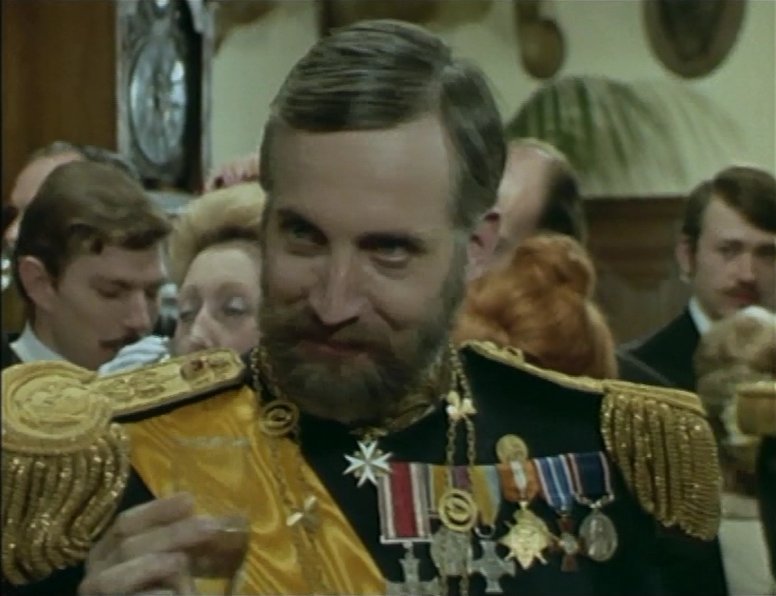
Closeup of the medals:
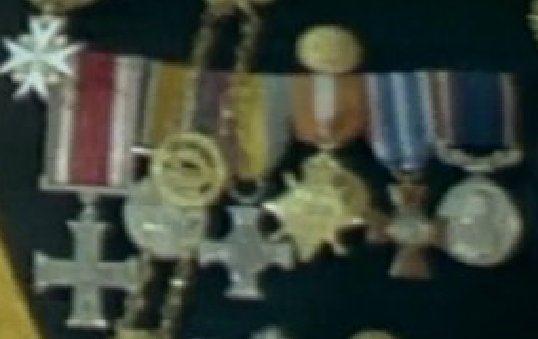 0
0 -

"à la santé de l'Entente Cordiale!" Commissaire Valentin is seen behind the Prince's right shoulder. In the movie the Prince is at least half a head taller than the others. As far as I know George V was not that tall.
0 -
-
-
I think the fidelity to historical details is better now, compared to what has been before. In 1970s the French TV released a charming detective series, entitled Les Brigades du Tigre. The story took place in Paris, from the early years of 20th century to, as far as I remember, mid-1930s. Le commissaire Paul Valentin (Jean-Claude Bouillon) and his men were then one of the best trained and most modern police teams in the French Police Forces.
In one of the early episodes, named Visite incognito the British Prince of Wales (later King George V) is coming to France to sign a pact against Imperial Germany. German special services learn about the visit and first try to compromise His Royal Highness by putting him to sleep and replacing by their own man, who gets drunk in public. Then they decide to kill the Prince by exploding a bomb during a cinema show which he watches, but the brave policemen prevent the coup and save the Prince's life.
Throughout the whole episode the Prince (played by Pierre Londiche) is a rather unpleasant and haughty figure (I wonder if that was purely accidental in a French film), both as himself and as his German other self. In a few scenes he appears in the uniform of a Fleet Admiral (to which rank I think he was actually promoted only as King). Here are a few stills from the film, showing the Prince in full glory. Take a look at his medals and enjoy! And pay particular attention to the riband!
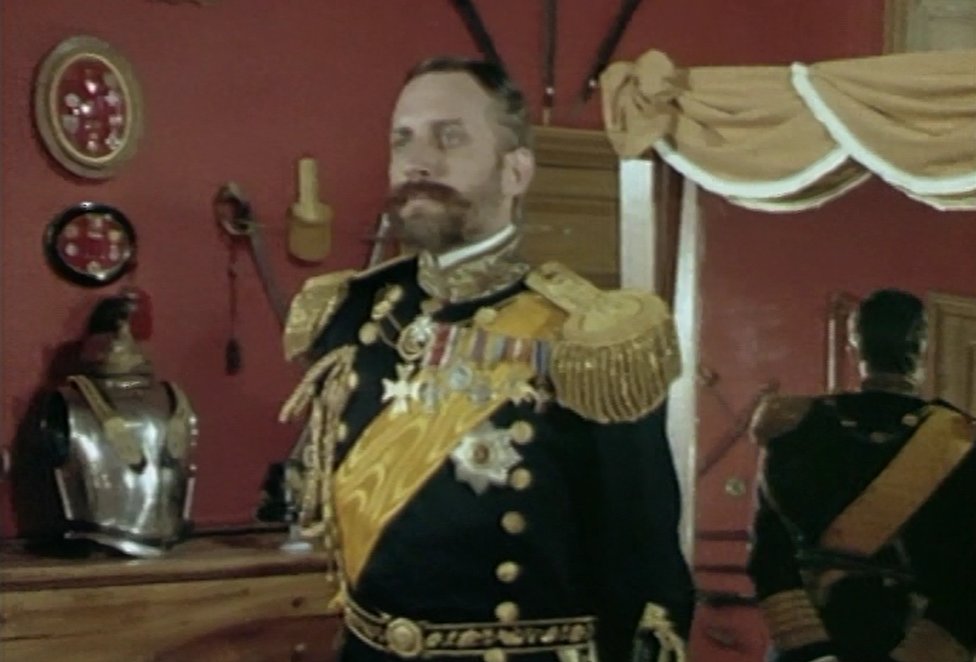 0
0 -
Just so, but if I only posted medals I approved of, or which were/are awarded by regimes I approve of, my website would be sparse indeed!
Megan, don't take it personally. I only wanted to point the thing out. I am sure most people here are aware what the DDR, Third Reich or USSR really was. Lots of medals, including many medals posted by really good fellows on this forum have even worse stories behind them. You are doing a great job indeed and please go on doing so! :)
0 -
I suppose that the obverse will be identical, except "CANADA" and the maple leaves, while the reverse will look entirely different. I agree the ribbon will be the same, too.
0 -
As a "one-time event" award, it is not included in some publications.
0 -
The full-time ones do. These awards were for part-timers, 'volunteers' (mostly paid but not their day job), and also people living in border areas who participated in sort of neighbourhood watch type activities, keeping an eye on things.
Those "things," to get them clear, was mostly keeping an eye on the country's own citizens to prevent their escape from the DDR, which not infrequently ended up in their death or years of imprisonment (an attempt to flee from East Germany was a criminal offence). Not surprisingly, those "volunteers" were much more active in the areas adjacent to West Germany and West Berlin than at the border with Poland or Czechoslovakia. DDR's Border Guard was one of few institutions of that kind in the world that guarded going out of the country rather than getting into it. The first conferment of the medal took place in December 1987, just two years before the Wall crumbled. To me one of the most shameful medals ever instituted.
0 -
Why would he be awarded the U.S. European-African-Middle Eastern Campaign Medal?
Especially since he already had the France & Germany Star awarded by his own country.
Some high-ranking allied military, including King George VI and Field Marshal Montgomery received this medal, which normally was not conferred to non-U.S. soldiers, as an honorary award.
0 -
Erinnerungsmedaille 20. Jahrestag der Bodenreform – demokratische Bodenreform.
Instituted: July 17, 1965 to commemorate the 20th anniversary of the land reform of 1945. Awarded to individuals who participated in the accomplishment of the land reform or in establishment of collective farming (Landwirtschaftliche Produktionsgenossenschaft - LPG) in East Germany.
Quite rare.
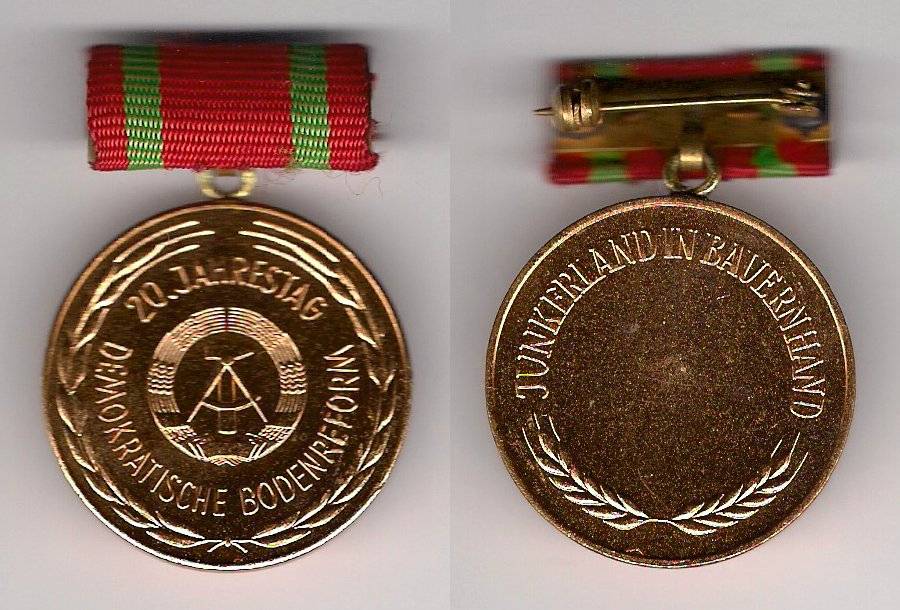 0
0 -
On 3 February 2011, Governor General David Johnston announced that the Queen had approved the creation of the Queen Elizabeth II Diamond Jubilee Medal.
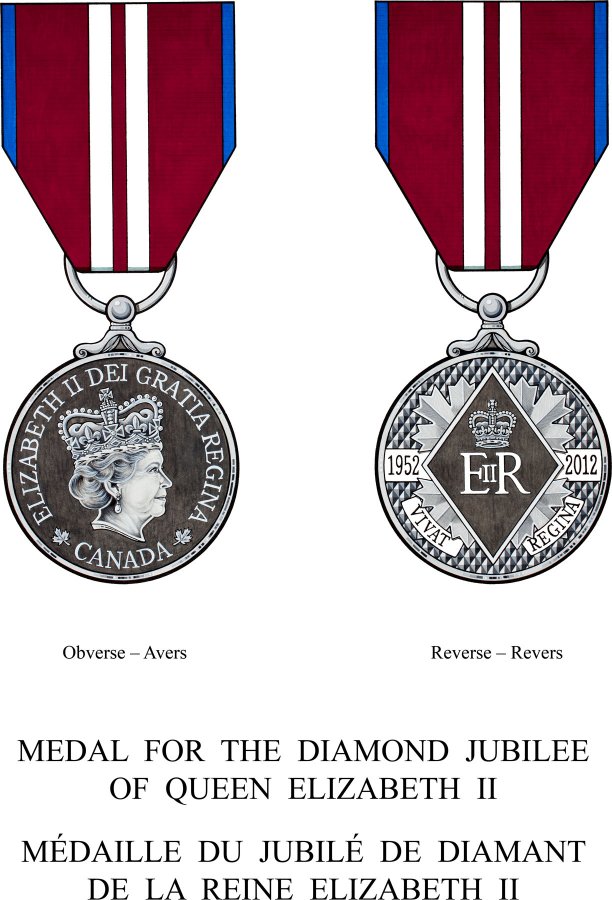
I wonder when Her Majesty's other lands (including Britain) will follow and if their medals will look alike.
Long live the Queen!!!
0 -
Great finding, Archer, thank you very much! I think it is really His Majesty's set. And do I see right that the Queen Victoria Diamond Jubilee Medal is gold indeed?
You have anticipated my next post. I have found another photo of His Majesty, in the uniform of an Army Field Marshal and dated 1949 (probably one of the last of his). I wanted to ask to guess which ribbons were in and which out, compared to his pre-WWII photos. In this case, however, there is no use asking, but the photo proves the set of miniatures is genuine. Note the unusual manner of wearing up to six (!) ribbons per row.
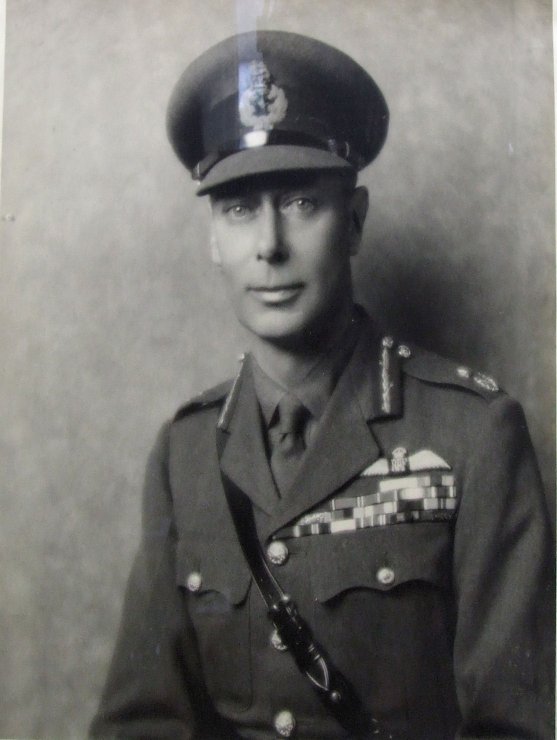
(http://www.thecanterburyauctiongalleries.com/catalogue/37/books)
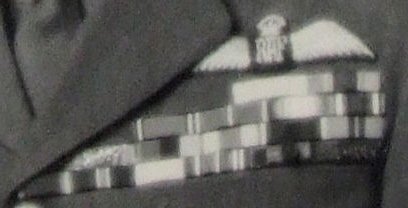
From Archer's miniature set and the photo it is clear that the King acquisitions for WWII included three WWII stars, the Defence Medal, British War Medal, 1939-1945 (the King did not wear the medals, probably to avoid wearing ones with his own effigy), as well as the foreign decorations, including Norwegian War Cross, Greek Decoration for Valour (Aristeion Andreias) and U.S. European-African-Middle Eastern Campaign Medal. Of the major honours for WWII he also had the U.S. Legion of Merit in the class of Chief Commander and Dutch Grand Cross of the Military Order of William, but for some reason he chose not to wear them either.
0 -
So many new responses... great!
James, do you know when exactly the King's state visit to France took place? I believe the ruling on Italian decorations in 1941 became void in 1943 after Italy swapped sides and became an ally again. I cannot speak on the King's behalf, but many allied soldiers wore their Italian decorations they received between 1943 and 1946, mostly SS Maurice and Lazarus, Crown of Italy or War Cross. I think George VI's decision not to wear the Military Order of Savoy might also be an effect of the proclamation of republic in 1946, after which all royal orders became obsolete. On the other hand, he still wore his Russian St. Vladimir, which makes my hypothesis questionable (however he stopped wearing it in later years, too).
As of the Queen Victoria Diamond Jubilee, it indeed looks silver on the photo. Yet, I have found another colour photo of the King from his coronation in 1937, on which the medal certainly looks gold. So the question remains open. The King exaggerated, however, adding the bar to his medal. Only those individuals were eligible for the bar, who had previously been awarded with the Victoria Golden Jubilee Medal of 1887, eight years before he was born!
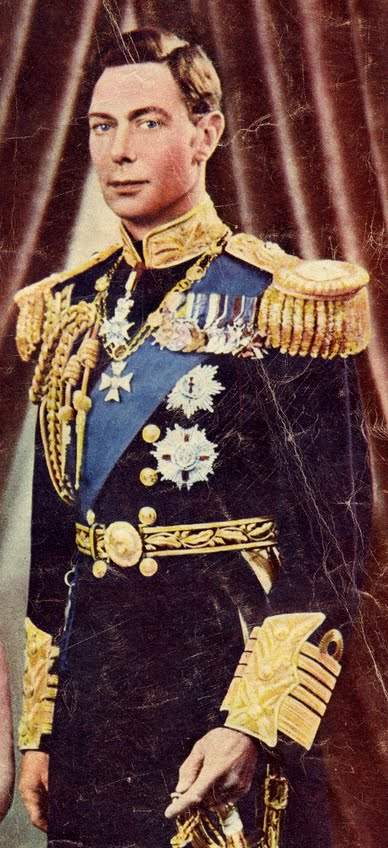

The medal with red ribbon is George V Silver Jubilee Medal, but the edge of the ribbon is covered by the bullion. Note also that the MID on the Victory Medal is missing again.
The King was seldom seen wearing more than two stars on his uniform, so he had to choose. On most photos he has those of the Garter and of GCMG. I indeed cannot remember any photo of his wearing either GCSI or GCIE.
1 -
The Edward VII Coron Medal is missing and the Garter riband goes under, not over the belt.
The Edward VII Coronation Medal is the 5th from the left I think, but you are right that the riband should go under the belt. Something I did not notice.
And as there have been no other responses, let me list my objections:
- missing MID on the WWI Victory Medal
- Queen Victoria Jubilee Medal is the Police type, 36 mm of diameter and with bar suspension instead of the ring
- as a royal and 2nd great-grandson of Queen Victoria, George VI was certainly eligible for the gold Jubilee Medal instead of silver
- George V Silver Jubilee Medal is missing
- a nobody-knows-what instead of the Italian Military Order of Savoy
- even if it was correct, the Military Order of Savoy would go without the rosette
- the same applies to the Russian Order of St. Vladimir (could have a band if awarded for war merit)
- missing swords on the Order of St. Vladimir
- missing palm on the Croix de Guerre
My objection regards also the King's GCMG star. All GCMG stars I have ever seen are with rectangular arms of the Cross of St. George. In this star they are clearly trapezium-shaped. Even if such a star really existed, the King certainly did not wear anything like that.
I was also suspicious about the crown above the badge of the Order of the Bath. Yet, an examination of George VI's photos reveals that he really wore his badge surmounted with St. Edward's Crown. Was it the Sovereign's badge?? I do not know.
0 -
This lady is one of the most popular singers in the PR of China. She is best known for her patriotic and ethnic songs. She is also a Major General of the Chinese People's Army. Additionally, she is the wife of Chinese Vice-President Xi Jinping.
I recently saw in a magazine a photo of her at a performance, in a uniform with a nice array of ribbons. Any idea about Ms. Peng's honours? An interesting thing is that although the ribbons seem to repeat, they are worn in a random sequence.

Closeup:
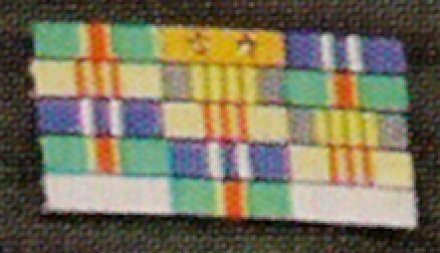 0
0 -
Close-up for better identification:
 0
0 -
Perfect answers all of you, including the last three ribbons!!!

The costumiers invariably get these things wrong. In this case he or she has assumed that there is nothing under the lapel. Consequently, the GCIE is missing.
It may be true, but perhaps it is just the light. The shade of blue under the lapel where the GCIE ribbon is supposed to be (before GCVO) looks slightly different, so maybe there is something there anyway...

The Queen Victoria Jubilee 1897, EVII and GV is ok and was on his short set of miniatures, a royal is entitled to coronation and Jubilees from birth [...]
Indeed! The Duke of York was seven years old when he received the Edward VII Coronation Medal and just two (!) when he got Queen Victoria Jubilee Medal. I think sometimes all these coronation and jubilee medals are made for the royalty to avoid the empty space on their tunics. I once saw an official photo of HRH Charles, the Prince of Wales in the young age, wearing the sash and star of the Garter, and two miniatures: of the Order of the Bath and of the Elizabeth II Coronation Medal (he was four when he received it). To make the things even more complicated, the insignia of the Bath were repeated, as he was wearing the neck badge at the same time. Most of the medals worn by the Royal Family are coronation/jubilee or long service medals, with the notable exceptions of Prince Philip, who has an imposing array of WWII stars and Prince Andrew, proudly wearing the medal for the Falkland war.
Well, I hope it was fun. Now there comes the second part and hopefully even more fun. Below is a photo from the same film, depicting the King in full glory in an admiral's attire, with (some of) his orders and medals. And the question this time is: how many mistakes in the King's honours are you able to find? I myself have spotted about 8 of different level of importance, most in his medal array. Some of them I am not sure of myself, but the other ones are evident. Enjoy!
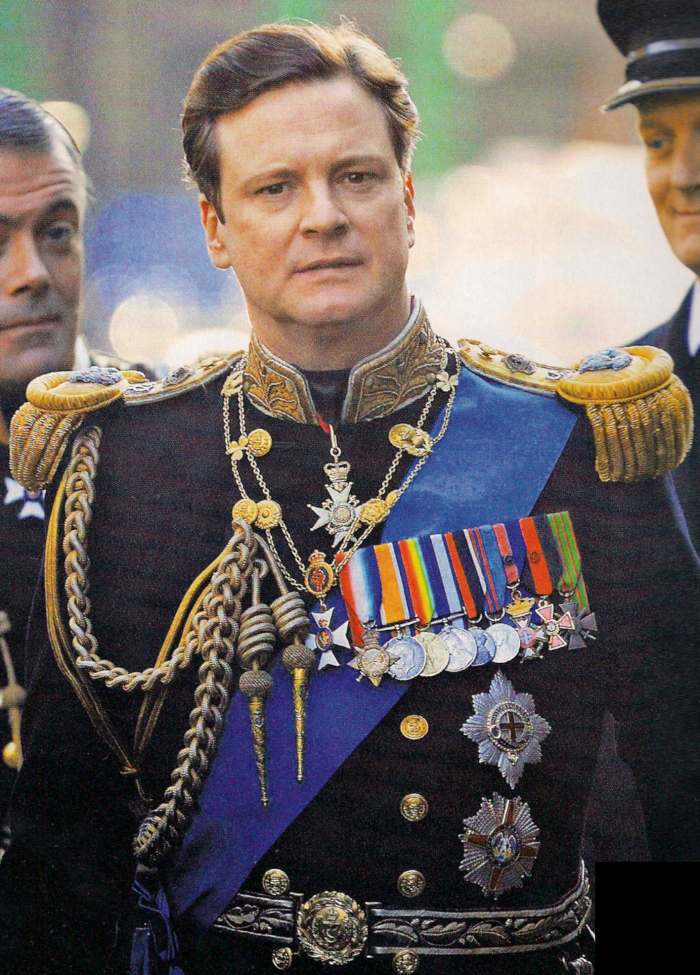 0
0 -
I finally went to see "King's Speech" last week. To me one of the best films I saw recently. I hope those who saw it liked it too.
Now a little riddle for GMIC fellows (not very difficult I think, except perhaps the last row): can you recognize the ribbons of Bertie's orders and medals? I can provide more photos if you need. Happy hunting!

A close-up of the ribbons:
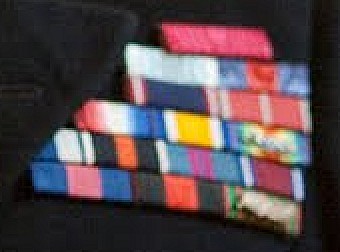 0
0 -
(Order Usmiechu)
Instituted in 1968. The only decoration of the world conferred on children's proposal and behalf to adults, irrespective of nationality, statehood and profession, for a heart shown to children. Initially Polish, it is now an international order with its own chapter.
The investiture is accompanied by a ceremony, during which recipients must drink a cup of lemon juice to the bottom, keeping a smile on their faces.
The medal was designed in 1967 by a then 9-year-old girl, Ewa Chrobak (a dame of the order since 1997).
http://en.wikipedia.org/wiki/Order_of_the_Smile
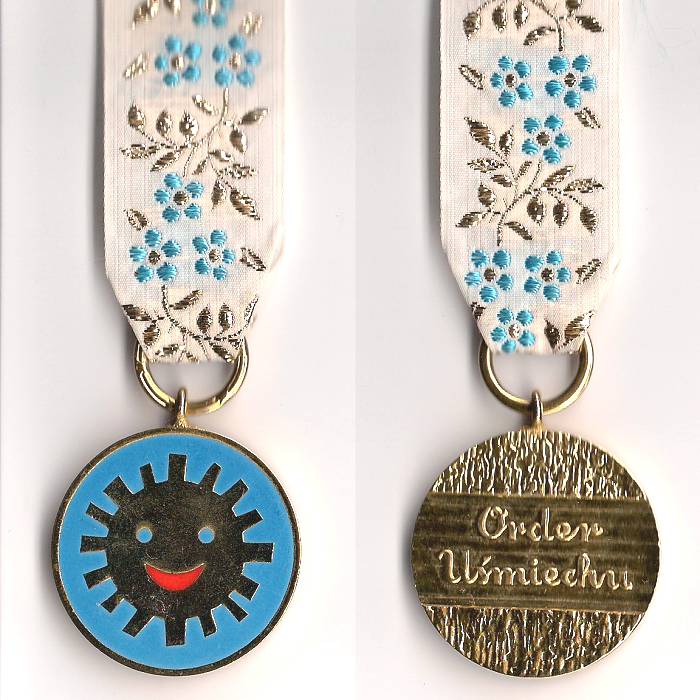 0
0 -
Just like with most order of merit, the class was closely related to recipient's rank. According to Todor Petrov, the 3rd class (Commander) was awarded to colonels and lieutenant colonels, 4th class (Officer) to majors and captains, 5th class (Knight) to lieutenants and 6th class (Silver Cross) to all non-commissioned ranks. The 5th and 6th class alone could be awarded with or without crown, which not only let differentiate the level of merit, but also left a possibility of a second award when needed.
Please also note that the war ribbon could only be worn with the 4th, 5th and 6th class of the order and there was no rosette on the war ribbon on the 4th class.
0



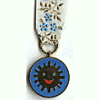

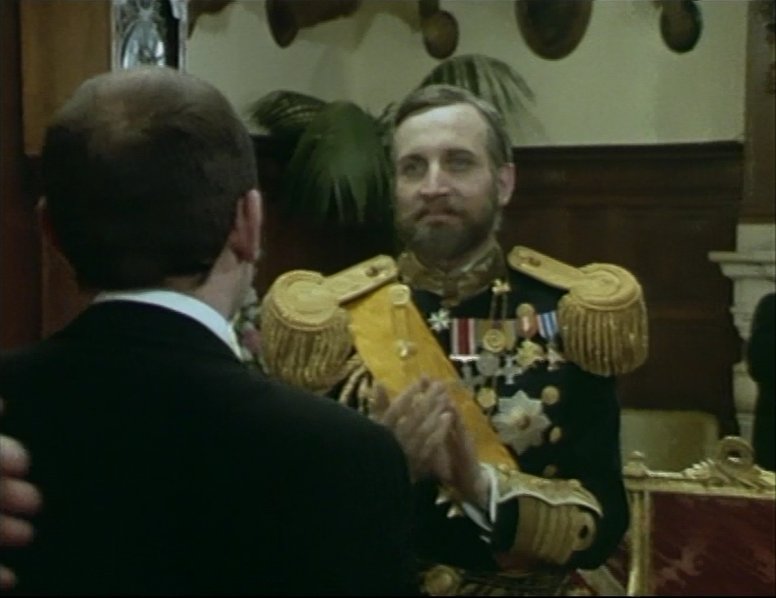

Poland Pilot Badges?
in Central & Eastern European States
Posted
Left to right:
- Observer
- Artillery Aircraft Pilot (smaller version for civilian attire)
- Pilot
All from WWII Polish Air Force in the West era.